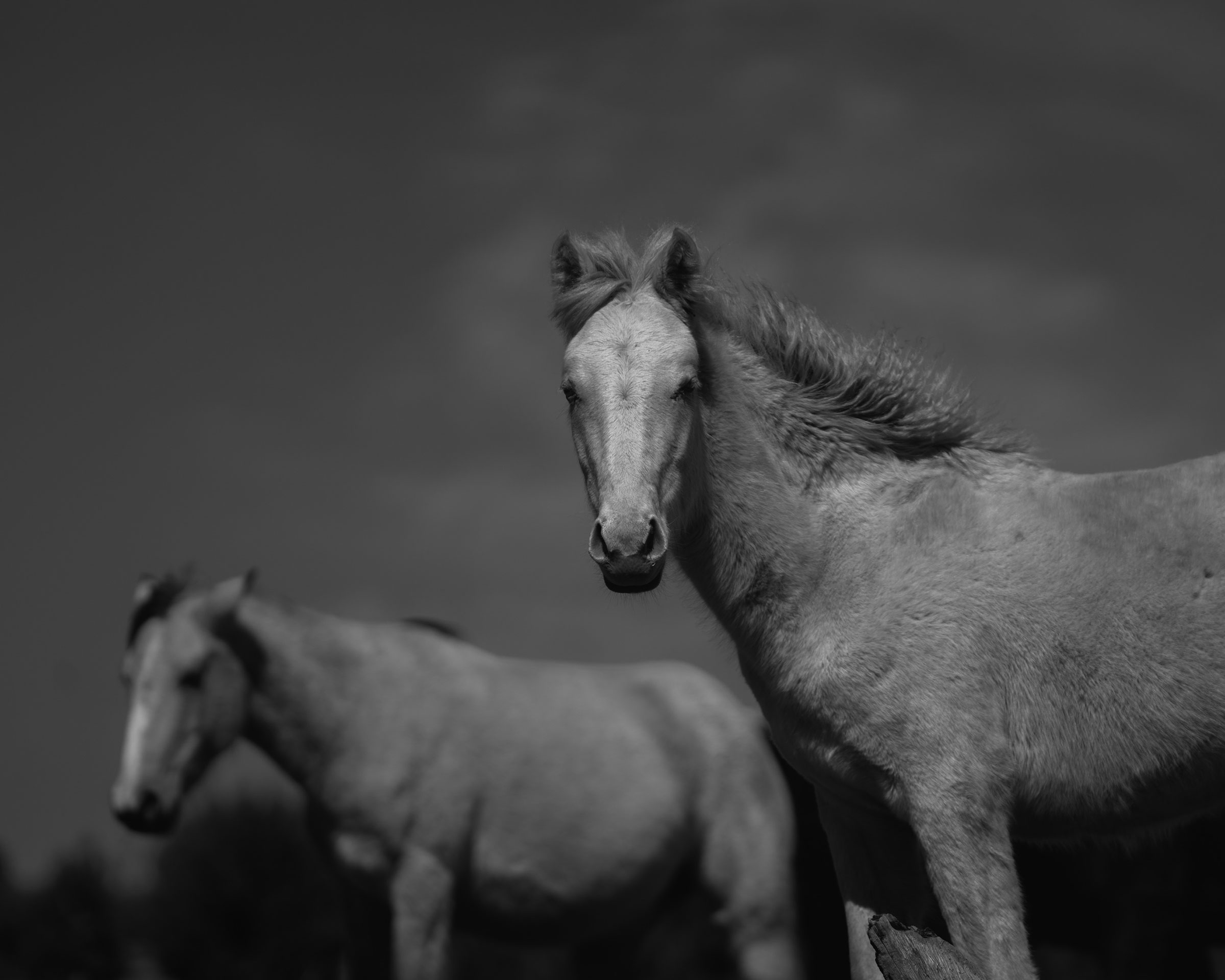Winter had frozen over the Apache-Sitgreaves National Forests in late January 2019 when Betty Nixon saw the dead stallion, known to locals as Raven.
His right leg bone was shattered by a bullet, and near him lay a red-coated pregnant mare, Sparrow, who had been shot in her belly and neck. Nearby, behind a stand of junipers, the mare’s filly stood alone, lost.
As Nixon approached, the filly took off, racing past the dead bodies of Raven and her mother.
Three years later, Nixon has chronicled the shootings of at least 40 wild horses in this forest in northeastern Arizona, where several hundred of the Heber herd, named for the unincorporated town surrounded by the forest, roam. Each day she sets out on often miles-long treks, recording the live horses she sees and the ones she finds too late. The most recent shootings that anyone knows of were in late December, when three dead wild horses were found. So far, necropsies have yielded few clues.
“I just don’t understand who would shoot a horse and leave it there,” says Jeffrey Todd, a spokesperson for the U.S. Forest Service, Apache-Sitgreaves National Forests. “It’s strange.”
After the December killings, the Forest Service announced a $10,000 reward for information leading to an arrest and conviction. Wild horses are federally protected, and killing one on public land is punishable by up to a year in jail and a $2,000 fine under the Wild Free-Roaming Horses and Burros Act of 1971.
But in the 51 years since the law passed, it has proved difficult to enforce. Most killings or abuse of the animals occur in remote areas, far from public view, and survivors can’t describe their assailants. And some people might be reluctant to turn in a shooter as population growth, climate change, and success in replenishing wild horse herds across the West heighten tensions between humans and beasts sharing the land.
Prosecutions happen, but they rarely result in much jail time.
Two Nevada men were sentenced to six months in federal prison and one year of supervised release in 2010 for shooting five wild horses with an AR-15 rifle. In 2005, two men in Utah were convicted of shooting nine horses and sentenced to five months in jail, followed by five months of house arrest, and ordered to pay restitution of $2,005. In another Nevada case, two men were each sentenced in 2002 to 60 days in jail, fined $2,000, for shooting a horse, one of 33 mustangs that had been shot dead four years earlier in the same area.
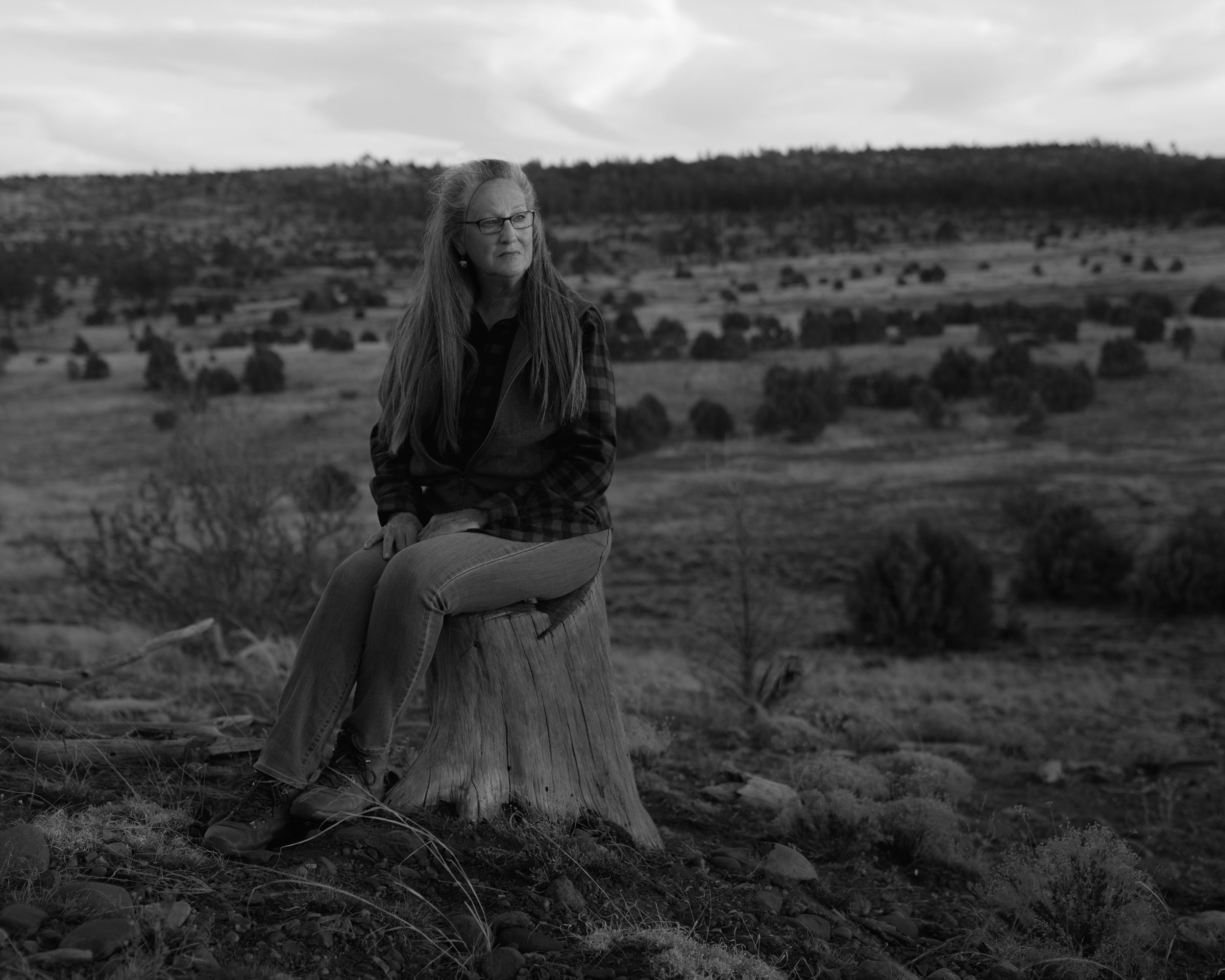
The shooter wants these horses to suffer.
The debate over wild horses
Ranchers, hunters, horse advocates, and forest officials in Arizona have been struggling for years over how to manage the growing Heber herd, which Todd estimates could number up to 500. Now, someone may have taken it upon themselves.
Defenders of the free-roaming horses say they play an important role in the ecosystem, breaking ice over water sources so they and other animals can drink in winter, and helping trim down brush and grasses. Others say the horses are ecosystem invaders, little more than a misplaced symbol of freedom in the West.
“There’s only so much food in the forest,” says John Koleszar, a hunter and former president of the Arizona Deer Association and Arizona Sportsmen for Wildlife Conservation. He compares the situation to hosting a dinner party for eight guests, with a turkey and a ham, and having 100 people show up. But Koleszar describes the killings as “appalling.” “We don’t in any way, shape, or form approve of that activity.”
The debate has pitted neighbor against neighbor, in a setting cherished by all.
“Whether you’re for the horses or against them,” Nixon says, “these are horrific crimes, and they need to stop.”

Sometimes the public thinks that all police work is an episode of CSI or FBI. We know that that's not reality.
The sun casts a silver glow across tall, sleepy Ponderosa pines on a February morning as you near the forest, home to the officially designated territory of the Heber herd. The 2002 Rodeo-Chediski fire, one of the worst in state history, has left many of the pines charred and drooping. Nixon grew up in Arizona but became familiar with the wilderness area after she’d moved to Kansas and would drive to Apache Junction, Ariz., southwest of the forest, to visit her mother. The sound of the breeze in those towering trees, the solitude, and, perhaps more than anything, the wildlife, drew Nixon, 66, to retire here in 2018 from suburban Kansas City. It didn’t take long for her to discover the wild horses, which would appear silently and suddenly as she hiked in the woods.
“This is my sanctuary,” says Nixon, who as a kid would gallop around on the playground, pretending to be a horse or on a horse. “I’ve been horse-crazy all my life. I love horses and just watching them.”
Then the killings began: two stallions were shot in October 2018; a month later, two more horses were gunned down. Then, in January 2019, Nixon saw it up close for the first time with Raven and his mare after a friend told her of their deaths. According to Nixon’s records, 14 horses were killed in the forest in 2019, 15 in 2020, and seven in 2021.
The moment she saw Raven and Sparrow, Nixon was determined to help find the killer.
“It’s vicious cruelty. It’s somebody that hates these horses with a vengeance,” she says, noting that several horses were shot in the face. “Shooting something in the face is personal,” Nixon says. “The shooter wants these horses to suffer.”
Nixon compares what she’s doing now to her years as an insurance claims investigator, studying motorcycle, snowmobile, car, and ATV accidents, and examining scenes in which faces were burned off or bodies were hit by trains. Later, she specialized in medical fraud rings, working with law enforcement to investigate organized crimes. She trained in evidence collection, background searches, and social media analysis.
Before that, Nixon was an Army intelligence officer, stationed at a listening post in West Berlin from 1982 to 1985 and trained to intercept radio and telephone communications.
“These skill sets are ingrained in me, in my DNA,” she says of her knack for investigative work.
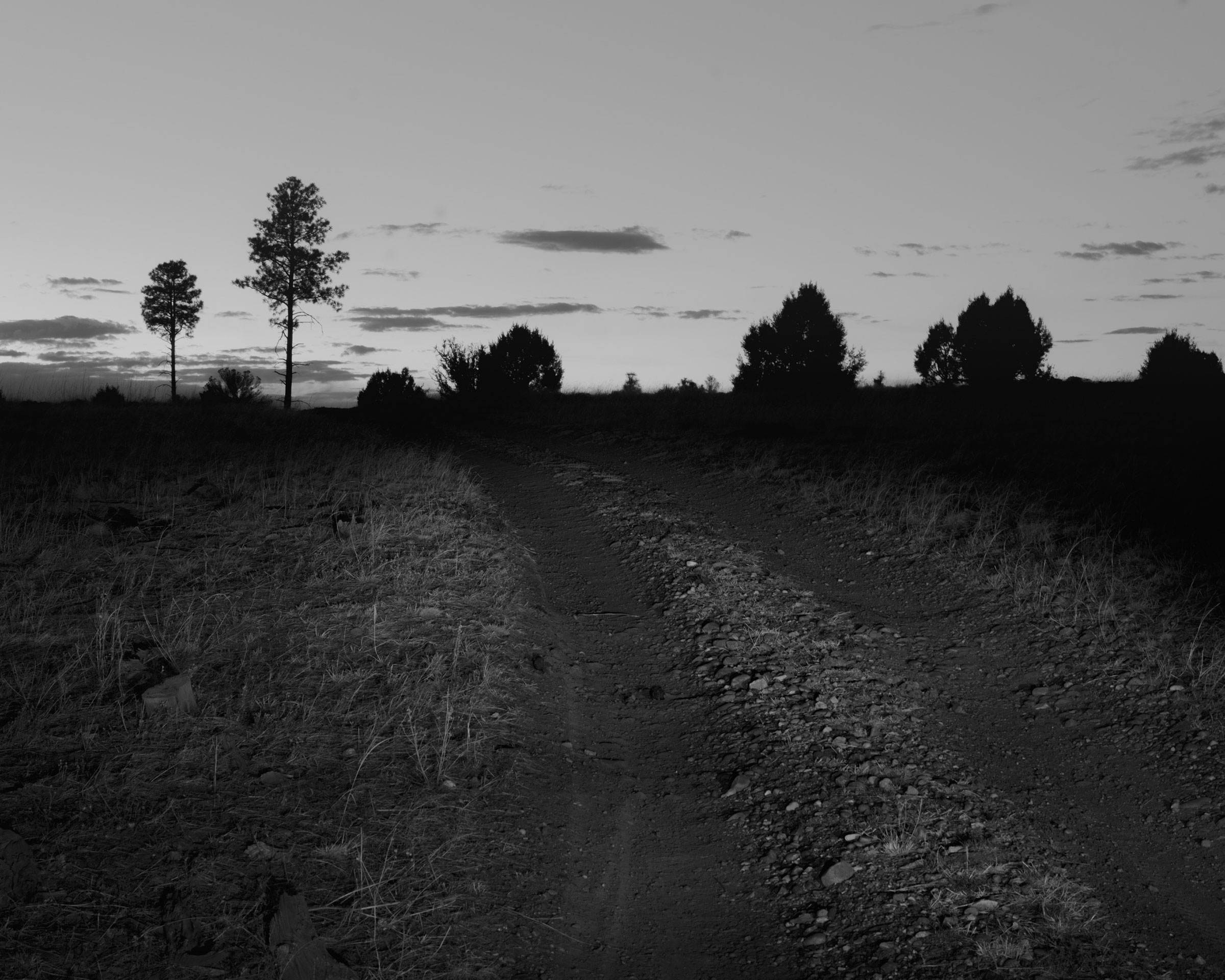
Conflict with wildlife is hardly new. Black bears, white sharks, wild horses, gray wolves, and other species nationwide are bumping up against human concerns that they’re becoming intrusive and endangering humans and livestock. The clashes raise questions that resonate beyond the Arizona forests: What does it mean for an animal to be free, and can the law truly protect that freedom?
Karrigan S. Bork, acting professor of law at the University of California, Davis, who has written extensively about wildlife and the law, attributes rising tensions over wildlife incursions in large part to wildfires, droughts, and storms nationwide that have dramatically changed animal and plant life. This has led to a rise in the view, toward some wild animals, of “how inconvenient they can be” to humans sharing the battered land, Bork says. “It’s creating more conflict; there are so many species we have to think about.”
But nobody knows the motive for the Arizona killings, and past attacks on wild horses and burros have been blamed on everything from trigger-happy passersby to hunters using the smelly carcasses of slain horses to lure bears.
We're looking to create a thriving ecological balance. The horse is not the only animal out there.
Koleszar says the killer is “misguided” or a “psychotic wacko.” Nixon suspects the shootings are tied to the bigger debate over land use. She, and many locals, have been critical of the Forest Service law enforcement’s response, questioning why the horse shootings continue after more than three years.
“I do sympathize with their frustration,” says James Alford, the special agent in charge of the Forest Service’s southwestern region, but Alford says the challenges to fighting crime in a wilderness area covering more than 2 million acres might not be apparent to critics. “Sometimes the public thinks that all police work is an episode of CSI or an episode of FBI,” he says. “We know that that’s not reality.”
Out here, there are no homes with doorbell cameras, no buildings with video cameras trained on surrounding areas, and little human traffic of any kind, vehicular or pedestrian.
“Horses are shot in very remote areas with no witnesses. They can remain undiscovered for days or weeks. The horses could have walked miles from where they were initially shot,” Alford says. “By the time we find the horses, sometimes they are in an advanced state of decomposition, or their carcasses could be scattered by predators or scavengers.”
Alford says law enforcement officers are patrolling the area and following up on all tips and leads they receive.
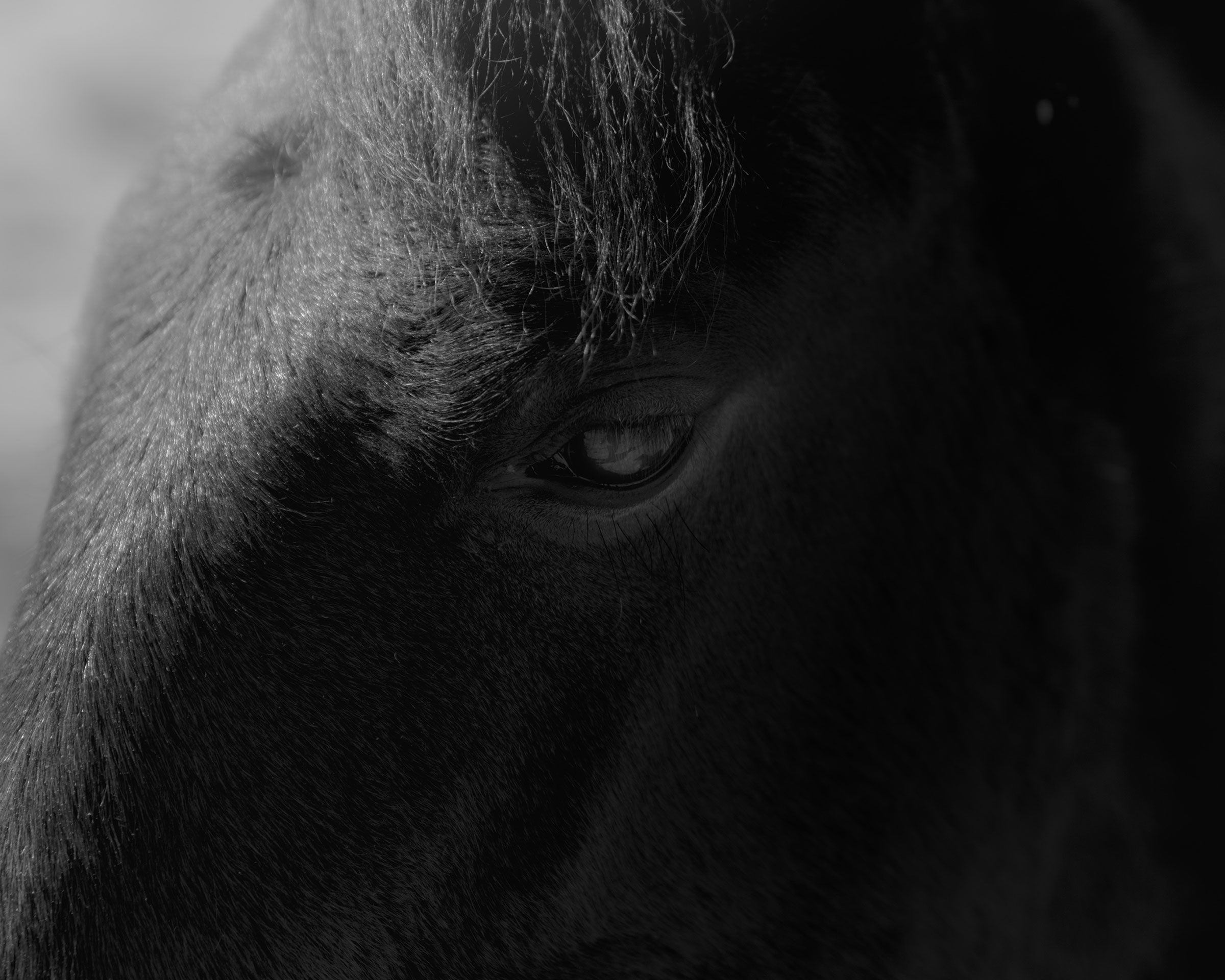
“There are members of the public and people within the communities—they know the persons responsible for committing these crimes—and with their help and with our thorough investigations, we’re going to be able to solve these cases,” he says.
Not the retirement she planned
All Nixon knows is that what began as a relaxing retirement hobby of tracking the bands, or families, of wild horses has become a grim task of searching for dead ones and sharing her information with law enforcement in hopes something cracks the case. She spends about 40 to 50 hours a week driving and hiking the south-central part of the forest, where the killings have occurred. Sometimes, she hikes as much as five to seven miles along rocky, winding terrain. She keeps a photo and video library of all of her records on each horse and its band.
Despite the seeming tranquility, Nixon knows danger stalks the forest. She carries two guns, bear spray, and a knife, and she parks her pickup truck in a way that would enable her to get away quickly. Also in her truck: an ax, fire extinguisher, snake-bite kit, shovel, bungee cords, jugs of water, extra socks, binoculars, fence-repair kit, and wire. In winter, when it can get as low as 20 degrees, she layers up and adds gloves and an ear-covering headband to her gear.
Even though she knows what’s out there, each discovery, each new reminder of what’s happening in the wild, is jarring.
While out walking on a quiet, chilly morning, Nixon suddenly stops. She looks down and points to the hip and pelvis bones of a stallion known as Big Daddy, all that’s left of the horse shot in the face in January 2019. A dead mare once lay next to him, and a second mare, Angel, was shot and crippled not too far away. Forest officials later euthanized Angel.
The sinister scene hangs in the air. Then, the sun peeks through the tall pines. From her truck, Nixon spots two young male horses—bachelors she calls Fan and Draco—one a shiny blood bay and the other a buckskin, each with a black mane and tail. They bask in the light, swishing their tails.


Nixon knows she’s always on the brink of heartbreak out here. The sight of ravens, a bald eagle, or, in the warmer months, a buzzard, makes her grow tense. Her mantra to calm down begins: One bird does not a dead horse make. One bird does not a dead horse make. But then her senses take over. “You can hear the birds eating the carcasses. You can hear the coyotes,” Nixon says.
As she approaches, the birds always fly away. The scene has become all too familiar. And yet, Nixon wants to be there. She wants to know who was killed and how. Another mantra echoes through her mind: Lord, if there’s something for me to see, let me see it. If there’s something to hear, let me hear it.
On the morning of Jan. 7, 2021, Nixon and a friend were driving around the forest when they saw birds hovering. “We knew something was dead,” Nixon says. When they reached the site, they saw the body of a blood bay mare by the side of the road. They knew her—she was part of a band led by a black stallion known as Midnight. The mare had been shot in the face; wildlife had been eating away at her back end. Midnight and a pregnant black mare were also there, dead. The bay mare’s filly was crippled, her eyes blinking. A few hours later, a Forest Service official would shoot the filly to end her suffering.
Soon, the blood bay mare would just be a skeleton. Her skull would show where the bullet hit her in the face.
Nixon’s work doesn’t end with the deaths. Then the search for survivors begins. “You’re just frantically looking for them. ‘Are they OK?’”
When Nixon finds a dead horse, she photographs and records everything at the site and looks for shell casings and tracks left by feet or vehicles. She calls law enforcement and shares what she’s found with them. Nixon also takes down license-plate numbers of vehicles she sees as she drives along the forest roads. They could be potential witnesses to a crime.
“I’m hoping to be a deterrent to somebody that would come out here and shoot horses—a presence out in the forest,” Nixon tells me as we walk among tall weeds and trees. “If there is a dead horse out here, I want to be the first to find it. And I want to find it quickly because if you don’t find it within the first day or two, the evidence will be consumed.”
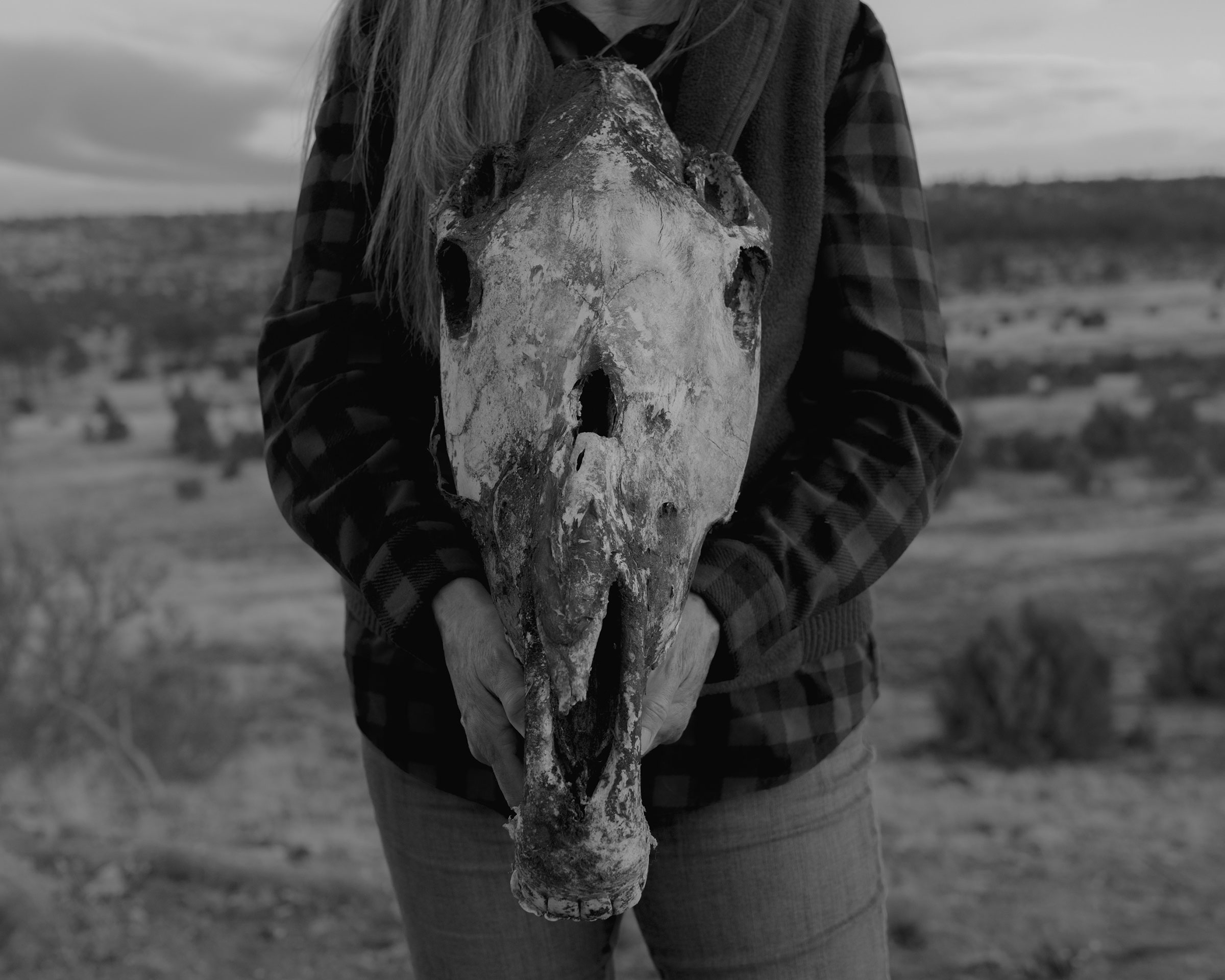
Shooting something in the face is personal.
The history of wild horses in America
Conquistadores brought wild horses, originally known as mustangs, from Spain in the 1500s. Today’s wild horses in Arizona may be descendants of the Spanish mustangs, but many have bred with ranch and farm horses.
The 1971 law to protect them and other wild-horse herds and burros grew out of a movement started by Velma “Wild Horse Annie” Bronn Johnston, a Nevadan who in the early 1950s became outraged at the rounding up and slaughter of horses for dog food and fertilizer. She launched a grassroots movement to protect the horses, whose numbers were declining, according to Wild Horse Country: The History, Myth, and Future of the Mustang, by David Philipps.
The law created herd management areas for wild horses and burros where they were found on public lands in the West. Today, the Bureau of Land Management and the U.S. Forest Service together manage 230 wild-horse territories on about 30 million acres of public lands in 10 states: Arizona, California, Colorado, Idaho, Montana, Nevada, New Mexico, Oregon, Utah, and Wyoming. The BLM alone oversees about 86,000 wild horses—who can live into their 20s—and burros on public lands, more than triple the 27,000 the bureau says the land can sustain.
Forest officials say the Heber herd began with six mares and one stallion but over the years has grown to hundreds. There is a Forest Service proposal to whittle the herd down to as few as 50 and no more than 104, using contraceptives and removal of horses; the 146-page draft management plan, originally set to take effect in the spring, has been pushed back for final review until the end of the year.
“We’re looking to create a thriving ecological balance,” says Tolani Francisco, the wild-horse and burro coordinator with the Forest Service’s southwestern regional office, located in Albuquerque, N.M. “The horse is not the only animal out there.”
But Francisco says the horses are paying the price for a “two-legged problem,” humans arguing over whose land-use rights take precedence. “The horses lose the most,” says Francisco, who has horses of her own and says the shootings make her “extremely angry.” “It makes all of us infuriatingly mad that someone would do this.”
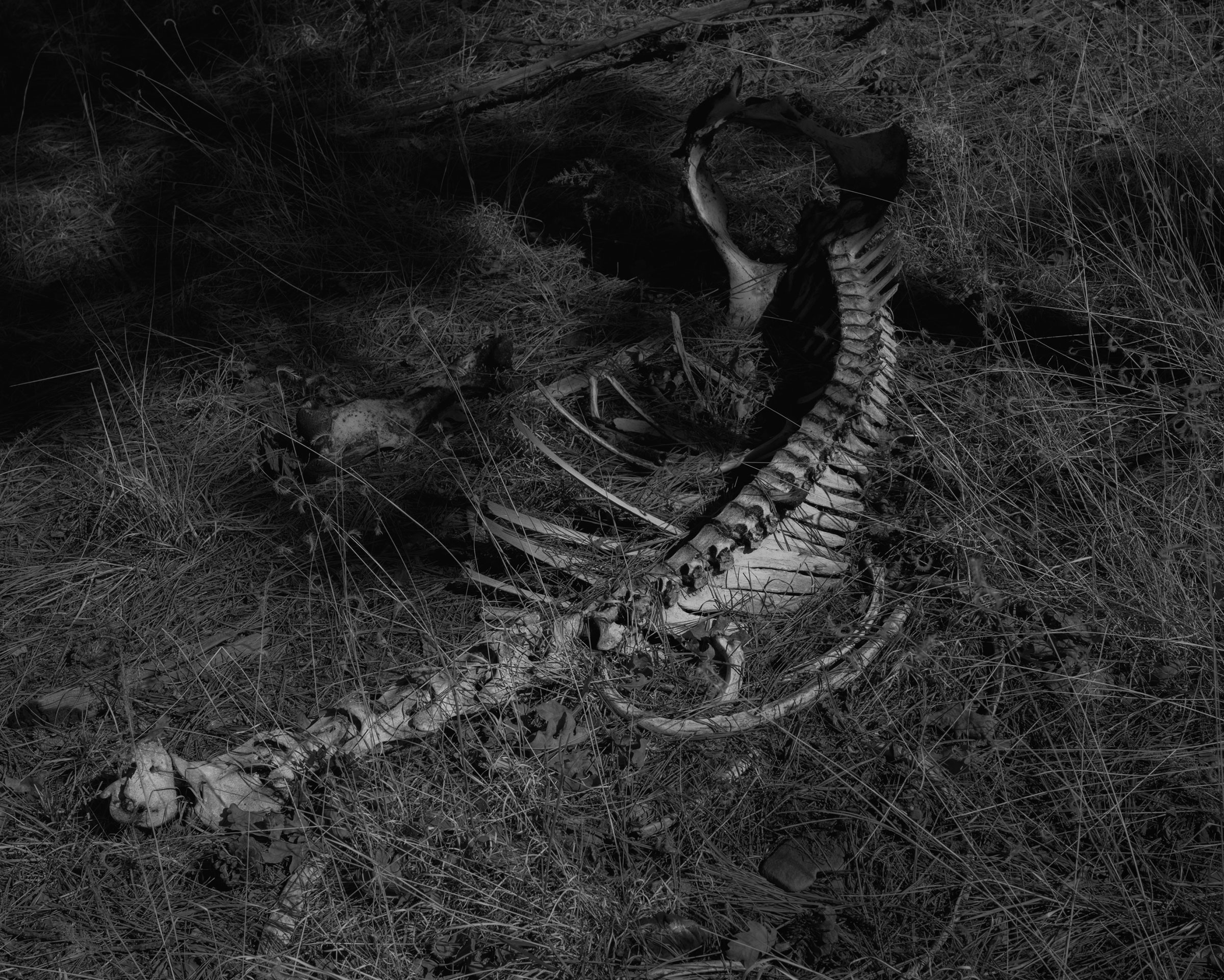
The wild-horse shootings, like the horses themselves, have divided the community. Most locals say they want the shootings to stop, but some people have cheered the horses’ deaths or accused defenders of the horses of falsely pointing fingers at cattle ranchers.
“Legend is the name I gave the shooter. I don’t drink and I’d go have a beer with the man/woman/alien that won’t back down to the feral horse crap,” one person wrote in a social media post. Some have questioned whether the horses should fall under the protection of the 1971 law, since some domesticated animals are also known to roam the forest.
Business owners worry about the impact on their livelihoods if people who visit the wilderness area to camp, hike, and fish are scared off by news of the shootings. Even some locals say they’re scared of the forest now. The issue has become politically charged in this small community. Just the words horse shootings drive people into their respective corners, invoking everything from Second Amendment rights to the mythological symbolism of horses.
If I'm going to have a ranch 50 years from now, it's got to support all the wildlife, if it's going to be good for my cattle.
For ranchers, the outcome could mean the difference between economic survival and insolvency.
Nelson Shirley pays for a permit for his cattle to graze on the land but says the horses have decimated some stretches. “The horses are scouring it down to the dirt,” says Shirley. “I can’t graze my cattle if I don’t have that piece of habitat intact … If I’m going to have a ranch 50 years from now, it’s got to support all the wildlife, if it’s going to be good for my cattle.”
The Forest Service says its analysis shows that 104 horses is the most the Heber territory can handle to ensure enough food for all the animals grazing there. Nixon, though, fears that number is “not genetically viable” for a healthy herd; they’ll start inbreeding, which leads to disease and abnormalities.
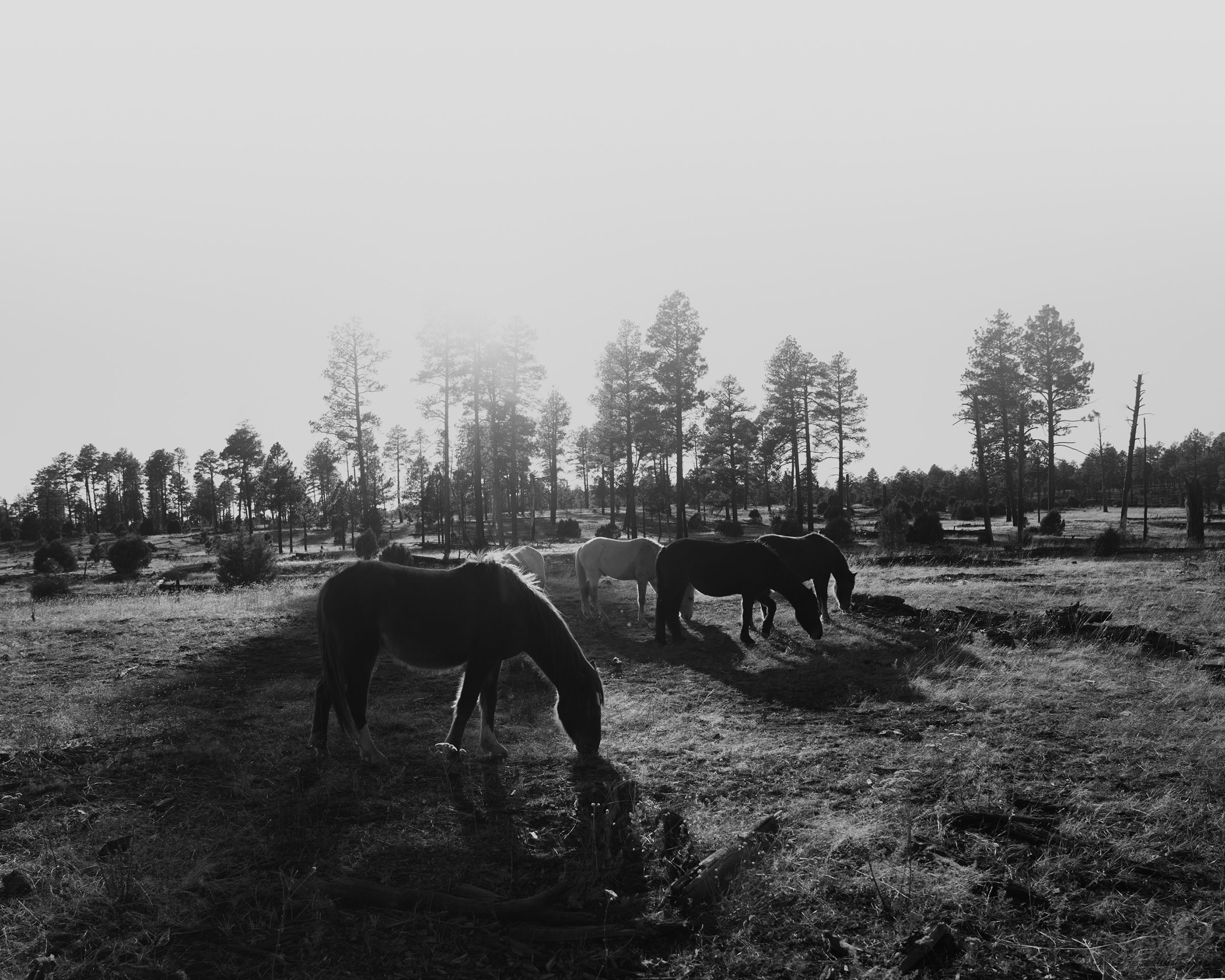
As the weather warms up, if history is any indication, the horse killings may subside for a while. The shootings generally happen in winter, when the area population drops to about 3,000 from a summer high of 18,000, making it easier for an assailant to operate unnoticed.
Alford, with support from the Navajo County sheriff’s office, says the investigation continues. And while Nixon has accused the Forest Service of being slow to respond to crime scenes and collect evidence, she and law enforcement officials have no choice but to work together until the shootings are solved.
“Betty’s helping us patrol the area,” Alford says. “She’s giving us more eyes out there to identify problems.”
In the forest, Nixon continues her watch. The sight of a horse on its hind legs in play, sparring with another horse, or of a band relaxing in the sun, still leaves her awestruck. When she comes upon a survivor orphaned in a shooting, Nixon marvels at its resilience. “All the survivors are my favorites to see,” she says. “I’m watching them grow up. I love them all.
They include the palomino filly dubbed Little Orphan Annie, who ran off after Raven and her mother were shot and killed in 2019.
Last year, Little Orphan Annie had her own foal, a buckskin. Nixon named her Fawn.
More Must-Reads from TIME
- Cybersecurity Experts Are Sounding the Alarm on DOGE
- Meet the 2025 Women of the Year
- The Harsh Truth About Disability Inclusion
- Why Do More Young Adults Have Cancer?
- Colman Domingo Leads With Radical Love
- How to Get Better at Doing Things Alone
- Michelle Zauner Stares Down the Darkness
Contact us at letters@time.com
